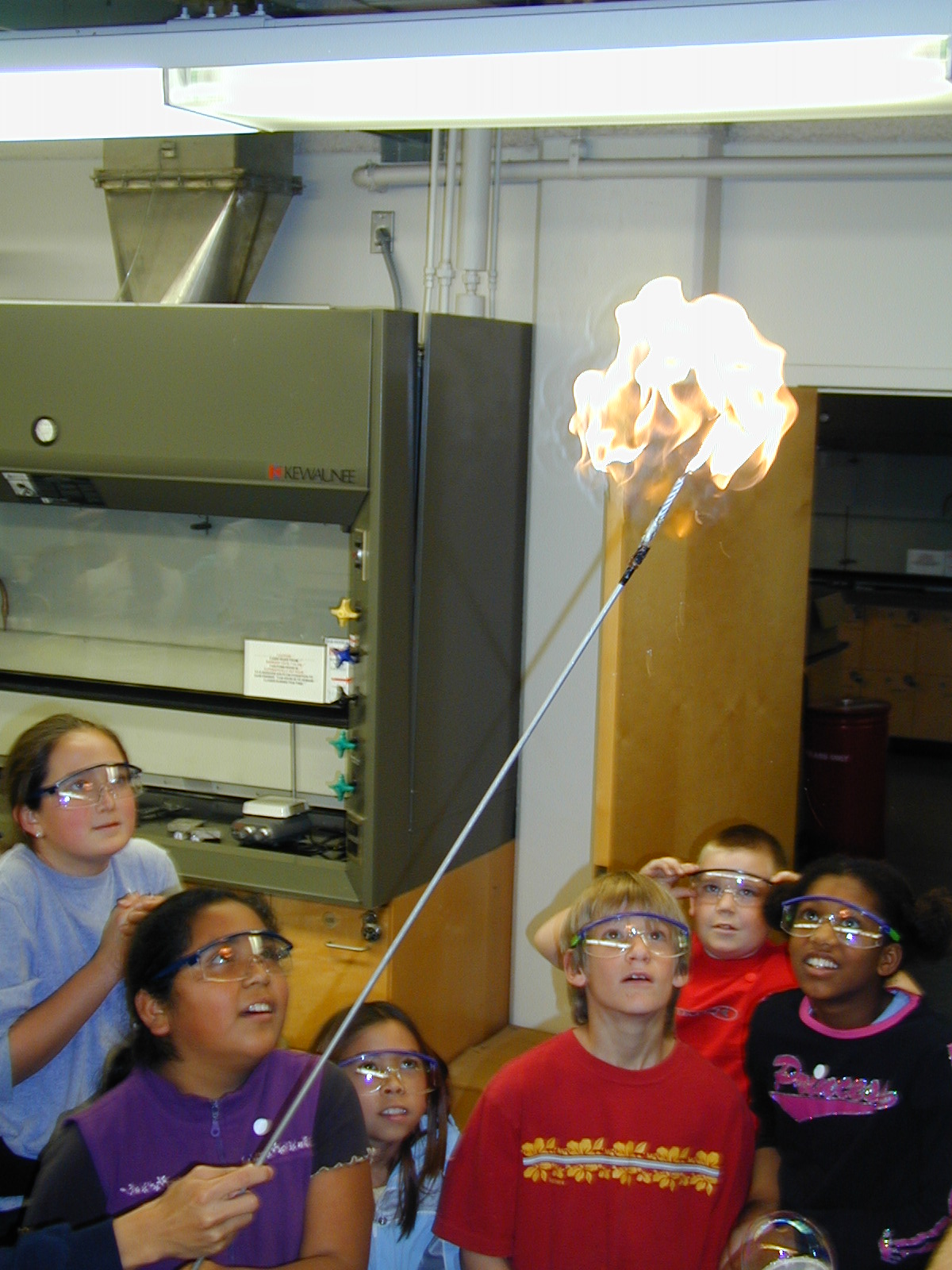1. Methane Bubbles
1. Hand out some small bubble solution containers. Have several students blow some bubbles by blowing into a wand and watch the bubbles float down to the ground.
2. Methane gas is commonly used as fuel for heating homes and for cooking. Will methane gas bubbles rise or fall? Blow some methane bubbles to see what happens. Clean funnel with water if bubbles pop too easily.
3. What else can we do with methane bubbles? We can light them!!!
Use a torch, a metal rod with a candle hooked to the end, to light the methane bubbles. Use a big candle to light the small candle (using the big candle is easier than matches to re-light the candle).
SAFETY: Students must hold the torch up above the funnel but not too close to the person making the bubbles and not too close to the funnel. If the funnel accidentally catches fire there is no danger. Simply hold the funnel away from you and away from the students and turn off the gas.

4. Light another bubble and ask students what they see? What happens as the gas burns? Do you see how the gas rises and spreads out as it rises? The flame is showing you where the gas is. What color is the flame?
5. Can you feel the heat given off as the methane burns. The methane burns in air. What gas in air does methane need to burn?
Methane needs oxygen to burn.
CH
4 + 2 O
2 → CO
2 + 2 H
2O + heat + light
methane oxygen carbon water fire
dioxide
NOTE: If the bubbles break too easily, turn off the gas and rinse and dry the funnel.

